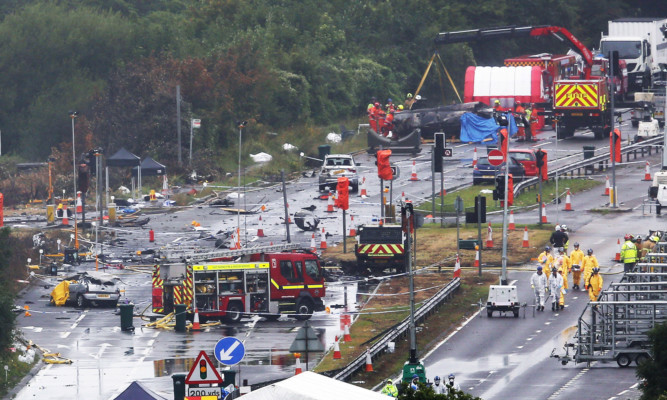A risk assessment for the 2015 Shoreham Air Show, where 11 people were killed, did not “show the range of hazards presented by different display aircraft”, the Air Accidents Investigation Branch (AAIB) has said.
The disaster happened when a Hawker Hunter plane crashed on to the A27 in West Sussex on August 22 last year.
The AAIB published a special bulletin into the incident, which revealed there was “no evidence of an attempt to consider either a hierarchy of protection or control”.
The AAIB commissioned an agency of the Health and Safety Executive to review the air show’s risk assessment.
It found “a number of deficiencies compared to what would have been expected”, the AAIB stated.
The review added: “It is not clear that those who assessed the risks and recorded the assessment had a full understanding of the purpose of the risk assessment.”
Shoreham’s flying display director (FDD) was not aware of the sequence of manoeuvres that the Hawker Hunter pilot intended to perform, the AAIB found.
Without prior knowledge of the routine or the ground over which he would fly, it was not possible to identify specific hazards and which groups of people would be exposed to them, the report stated.
The FDD presented risk assessments to the Civil Aviation Authority (CAA) to seek permission for two displays following the disaster that “were not materially different from that for Shoreham”, the AAIB said.
Investigators issued a safety recommendation calling for the CAA to “specify the safety management and other competencies” that flying show organisers must demonstrate.
